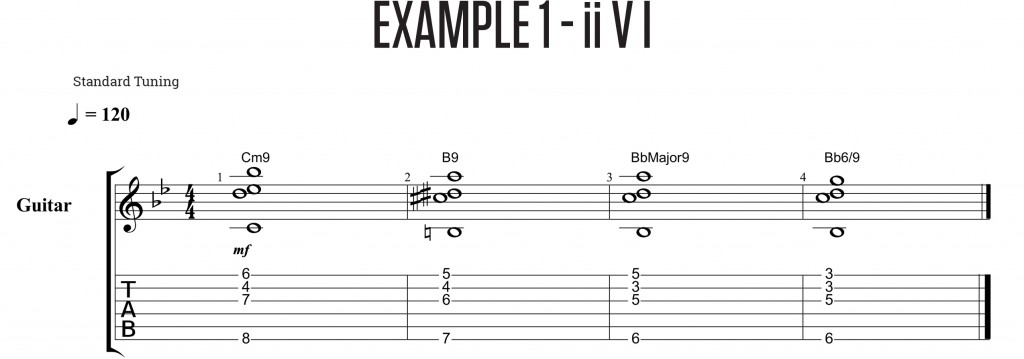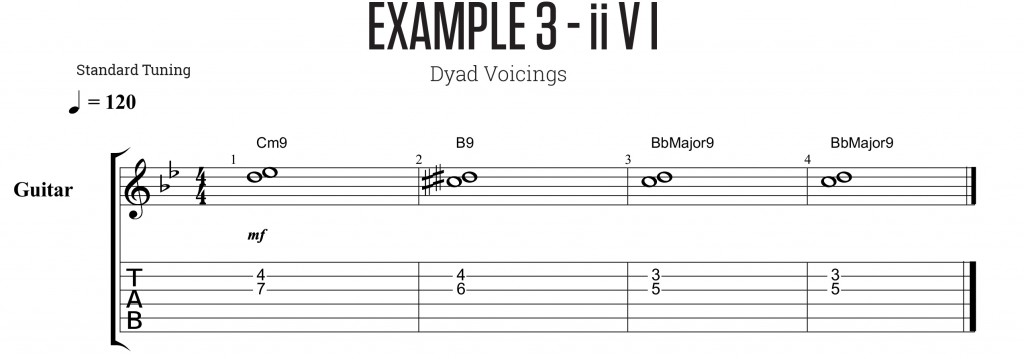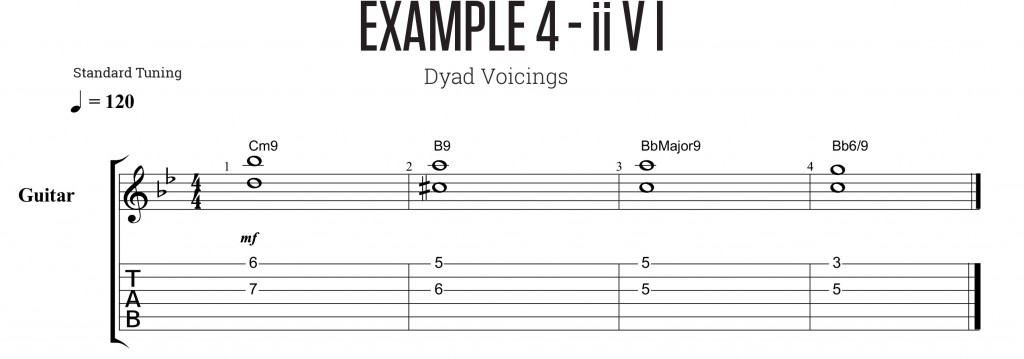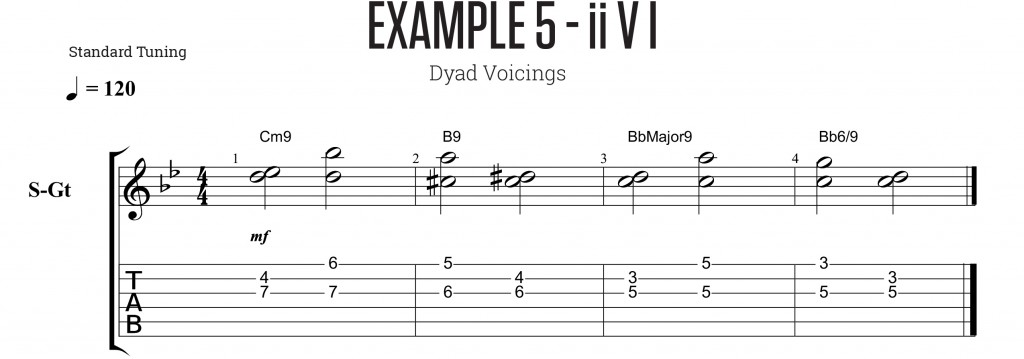Let’s face it, playing chords with awkward fingerings is a pain in the hand. But this shouldn’t stop us from exploring all of our harmonic possibilities. Oftentimes by eliminating notes from a difficult grip, we end up with really unique sounds. So, playing less usually gives us more!
In Example 1, I have a laid out a ii V I progression in the key of Bb Major. You’ll see that for each chord I’ve weaved in a bit of harmonic color to help modernize the sound of the progression. Try playing through the example a few times. You’ll notice there is a good amount of voice leading that makes this series of chords flow smoothly, including the use of close interval sounds such as 2nds. And, notice in measure 2 the use of the tritone sub, B9, for the V chord F7. But, the grips themselves could slow anyone down. If this progression were played in a solo setting, the difficulty of the grips wouldn’t matter so much because you could break the rules of metric time. But, in a duo or group setting where time can be a factor, you might want an easier way to move from chord to chord. So, let me show you how we can maintain the sounds of this spiced up ii V I by a process of elimination.

If we take away the bass note in each of the chords, we are left with a three-note-voicing as shown in Example 2. If you were comping in a group, you could easily move from chord to chord. And if there’s a bass player holding it down, there’s no need to crowd the low register anyway. Here’s the great thing, although the bass notes are gone, we still retain the harmonic color of each chord. Plus, it gets us thinking and hearing beyond from having to voice a chord with the root in the bass.

Now, let’s take things a step further. Example 3 shows each chord as two notes, also known as dyads. By taking away the notes of the first string, we are left with major and minor 2nd intervals representing each chord. This gives us a dissonant sound, and you might be thinking, “Is this even a chord?”. Though we have dropped individual notes from each chord, for the most part the chord character or quality is still retained. The use of dyads can open up our ears and change our perception of what a chord can be. Remember, less can be more. In Example 4, we lose the second string and bring back the first string. Now you have a dyad voicing consisting of the third and first string, which is essentially a 6th interval in measures 1-3 and a perfect 5th in measure 4.


And here’s where the fun really begins! Example 5 takes our previous dyad voicings from Examples 3 & 4 and combines them in each measure. By going back and forth between close dissonant 2nds and open sounding 6ths we can create a good amount of harmonic and melodic movement throughout the whole progression.

As you can see, all it takes is a little thinking outside the box to make big things happen with harmony. Your fingers will thank you and your perception of chords will be broadened. Keep experimenting and explore the second and first string dyads on your own. You could also add in the bass note again and create some really wide sounding dyads if you like. You could even play just one note out of each chord. Endless possibilities! As always, follow your ear and have fun!


